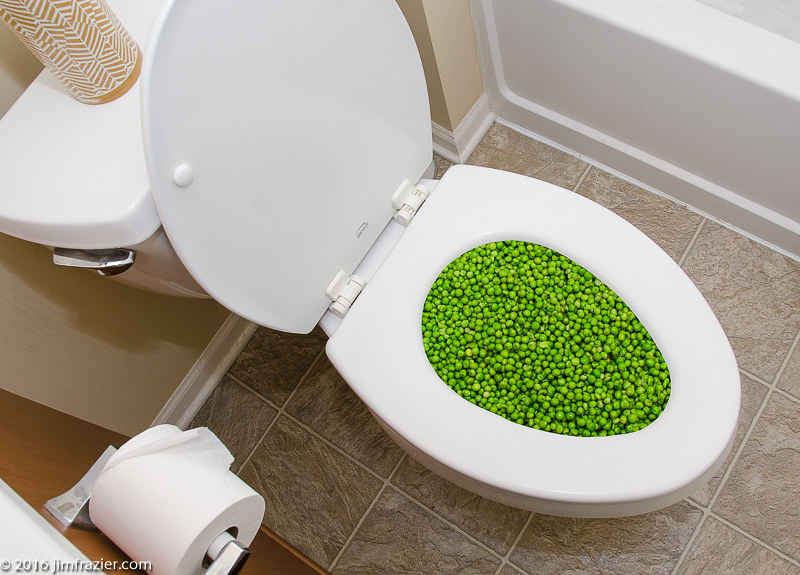The article further down about Think Twice Before Flushing Food Down Your Toilet is definitely interesting. Read it for your own benefit and see what you think of it.

Intro
Lots of people are usually faced with the issue of what to do with food waste, specifically when it comes to leftovers or scraps. One typical concern that emerges is whether it's alright to flush food down the commode. In this write-up, we'll delve into the reasons why people may think about purging food, the effects of doing so, and alternative approaches for proper disposal.
Reasons individuals could consider flushing food
Lack of awareness
Some people may not understand the possible harm brought on by flushing food down the commode. They might wrongly think that it's a safe method.
Convenience
Flushing food down the commode may feel like a fast and simple remedy to dealing with unwanted scraps, particularly when there's no neighboring trash can offered.
Idleness
Sometimes, individuals might just choose to flush food out of sheer laziness, without thinking about the repercussions of their activities.
Effects of flushing food down the toilet
Environmental impact
Food waste that winds up in waterways can add to contamination and harm water environments. Additionally, the water utilized to purge food can stress water resources.
Plumbing problems
Purging food can result in clogged pipes and drains, causing pricey plumbing repairs and troubles.
Types of food that should not be flushed
Fibrous foods
Foods with fibrous textures such as celery or corn husks can obtain tangled in pipes and create clogs.
Starchy foods
Starchy foods like pasta and rice can take in water and swell, resulting in obstructions in pipelines.
Oils and fats
Greasy foods like bacon or cooking oils must never be flushed down the bathroom as they can strengthen and cause obstructions.
Correct disposal methods for food waste
Utilizing a waste disposal unit
For homes geared up with waste disposal unit, food scraps can be ground up and purged via the pipes system. However, not all foods are suitable for disposal in this way.
Recycling
Particular food product packaging products can be reused, minimizing waste and decreasing ecological influence.
Composting
Composting is an environmentally friendly method to dispose of food waste. Organic materials can be composted and used to enrich dirt for gardening.
The significance of appropriate waste administration
Minimizing environmental damage
Proper waste management practices, such as composting and recycling, assistance lessen contamination and preserve natural resources for future generations.
Protecting pipes systems
By staying clear of the method of flushing food down the toilet, home owners can stop expensive plumbing fixings and keep the stability of their plumbing systems.
Verdict
In conclusion, while it may be alluring to flush food down the commode for convenience, it is essential to understand the prospective repercussions of this activity. By adopting appropriate waste management techniques and taking care of food waste responsibly, people can contribute to healthier pipes systems and a cleaner environment for all.
FLUSH FOOD DOWN THE TOILET?
FLUSHING FOOD CAN CAUSE BLOCKED DRAINS IN YOUR HOME
All of the plumbing fixtures in your home are connected to the same sewer pipe outside of your home. This outdoor sewer pipe is responsible for transporting all the wastewater from your home to the Council sewer mains. Even small pieces of food that go down the kitchen sink can cause problems for your sewer. It should therefore be obvious that flushing larger bits of food, such as meat, risks a clog in either the toilet itself or the sewer pipes. Flushing greasy food is even more problematic because oil coagulates when it cools, coating the interior lining of your pipes.
THE TOILET IS NOT A BIN
Food isn’t the only thing that people shouldn’t be flushing down the toilet. People use the toilet to dispose of all kinds of things such as tampons, makeup wipes, dental floss, kitty litter and even underwear. Water goes to great lengths to educate residents about the high costs and stress placed on wastewater treatment systems simply from people flushing the wrong stuff down the toilet. It costs taxpayers millions of dollars each year, and homeowners thousands in blocked drain repairs.
FLUSHING FOOD IS A WASTE OF WATER
Flushing food is a waste of our most precious resource - water. In June this year Level 1 water restrictions were introduced to protect water supply from drought conditions. Much of New South Wales continues to be affected by prolonged drought with recent figures revealing up to 97 per cent of the state remains in drought. Depending on whether you have a single or dual flush toilet, every single flush uses between five and 11 litres of water. In the current climate this is a huge amount of water to be wasting on flushing food that should be placed in the bin (or better yet, the compost).
https://www.jabplumbingsolutions.com.au/blog/can-you-flush-food-down-the-toilet

I ran across that piece of writing about Flushing Food Down the Toilet? when browsing on the web. Kindly take the time to distribute this blog posting if you appreciated it. Many thanks for your time invested reading it.
Get Started
Comments on “Are You Capable to Flush Food in the Toilet?”